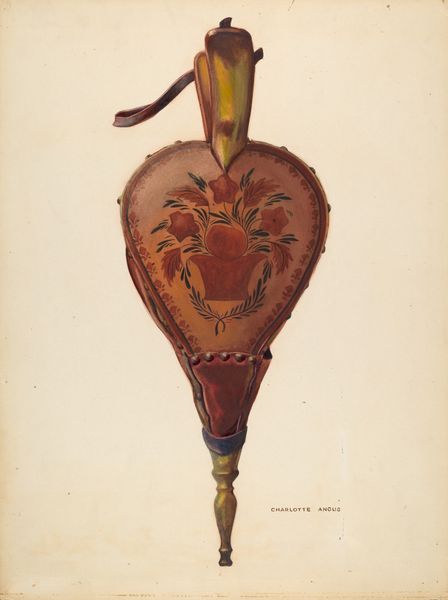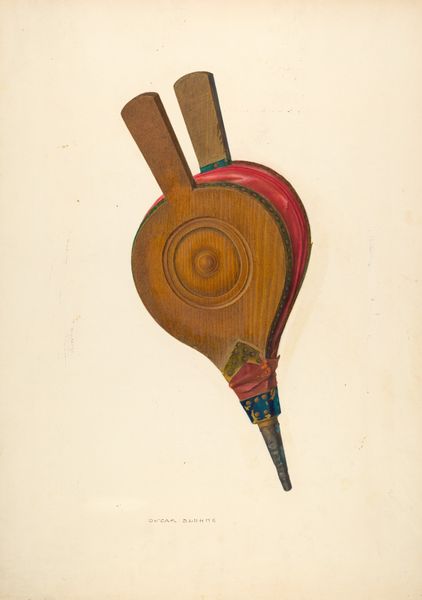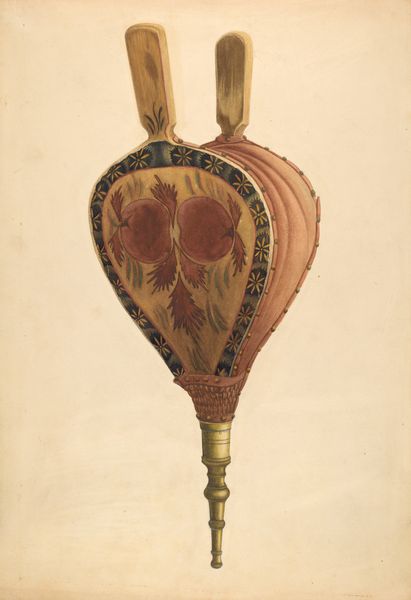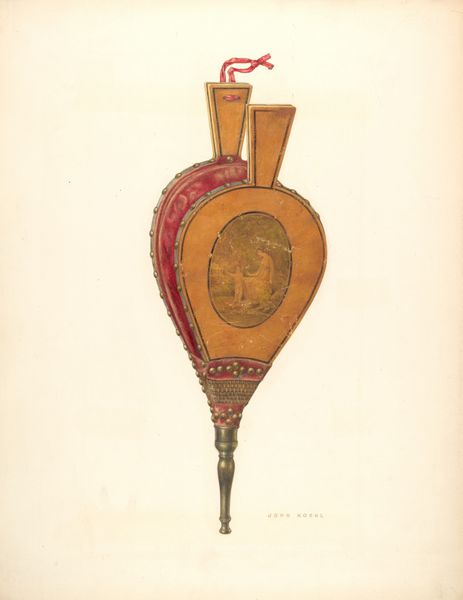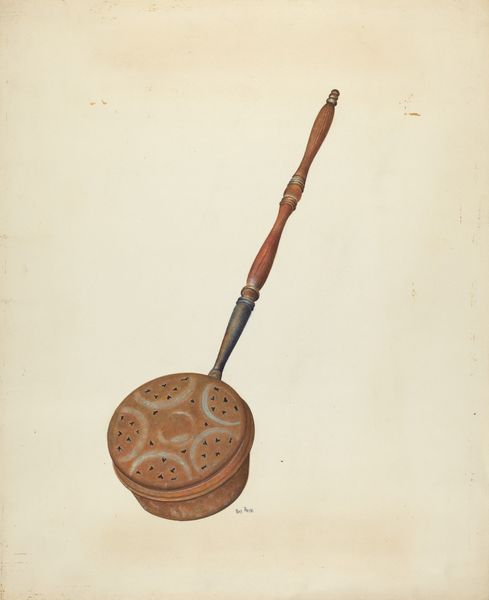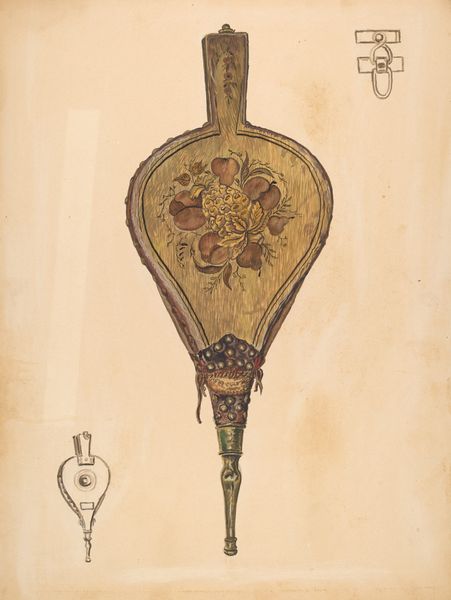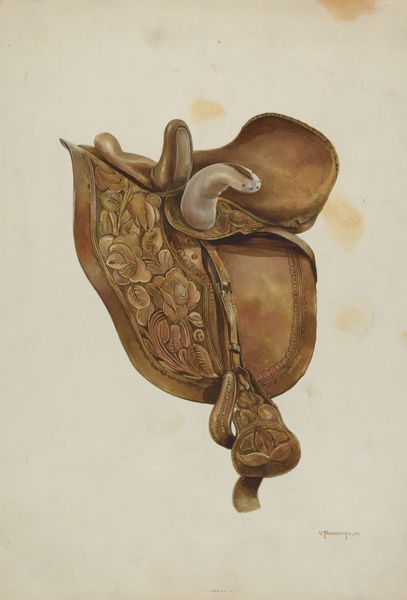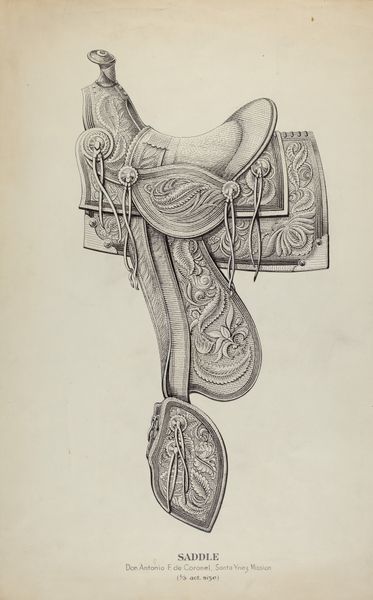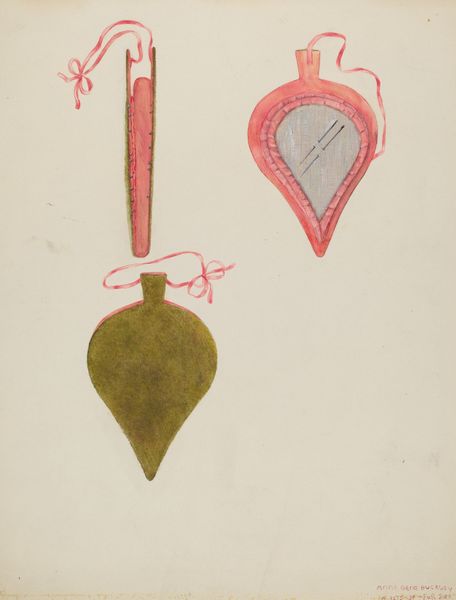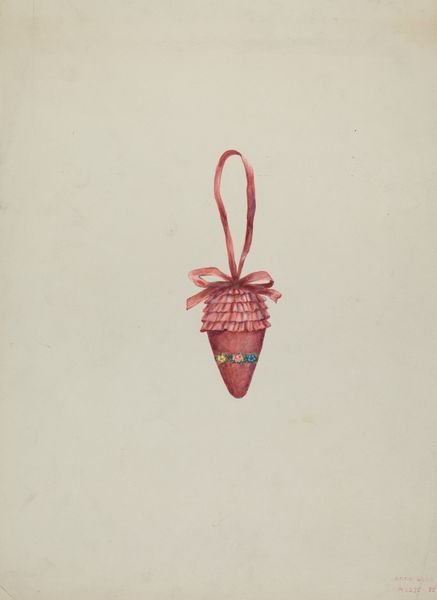
drawing, watercolor, pencil
#
drawing
#
watercolor
#
pencil drawing
#
coloured pencil
#
pencil
#
watercolour illustration
#
academic-art
#
watercolor
Dimensions: overall: 30.2 x 21.1 cm (11 7/8 x 8 5/16 in.) Original IAD Object: 18" long; 7" high
Copyright: National Gallery of Art: CC0 1.0
Curator: We're looking at "Painted Bellows," a watercolor and pencil drawing by Ella Josephine Sterling, created around 1936. Editor: Oh, it’s…quaint, isn't it? A burst of warmth preserved in strokes of watercolour. Feels like stumbling upon a cherished, handcrafted object. Curator: Indeed. I see it as an excellent example of domestic craftsmanship elevated to an art form. Sterling’s piece emphasizes the material culture of her time by highlighting a functional object – the bellows – that’s been ornamented. Editor: I love how the decorative floral elements pop against that buttery yellow, but look closer: it's just… wonky. The asymmetry gives it character though; a bit like finding a lopsided grin unexpectedly charming. Curator: The construction methods of such objects always intrigues me. We can see evidence of hand tools and crafted joins throughout, which tell stories about the community from which the art has emerged and of an industrial context beginning to impinge on its design and utility. Consider the materials themselves: wood, metal, paint – all locally sourced. Editor: See, that grounded quality appeals to me too, but it also sets my imagination off. I picture someone lovingly painting those tulips, bringing a personal touch to something purely utilitarian. It becomes a small act of rebellion against the mundane. Curator: I appreciate that perspective. I see the bellows as both a decorative piece and a functional item essential in any fireplace setting, and by immortalizing that it is in effect honoring the work required for keeping homes and industries functioning. The act of creation being almost indistinguishable from a productive industry, rather than fine art for its own sake. Editor: Perhaps she's suggesting the mundane, that necessary grunt work, *is* beautiful, and that imbuing any practical object with creativity can be transformative. Curator: Certainly a possibility. It invites reflection on value—artistic, utilitarian, and even emotional. Editor: I agree completely. What initially appeared straightforward offers, upon further reflection, so many hidden and fascinating pathways of understanding!
Comments
No comments
Be the first to comment and join the conversation on the ultimate creative platform.
